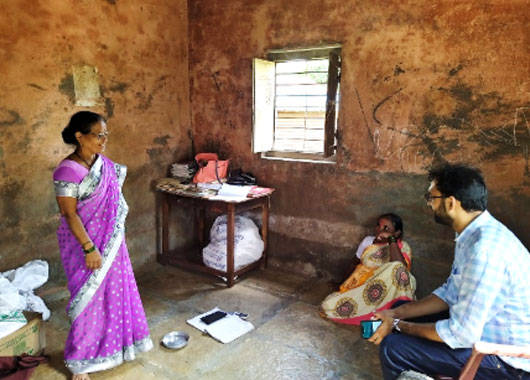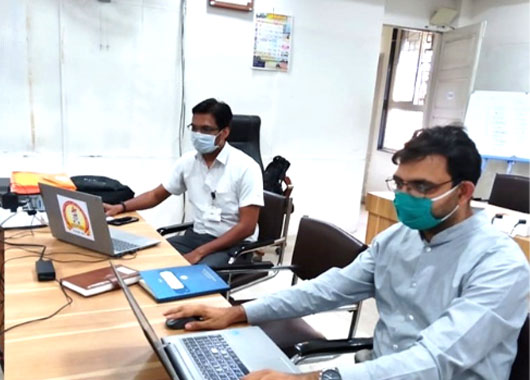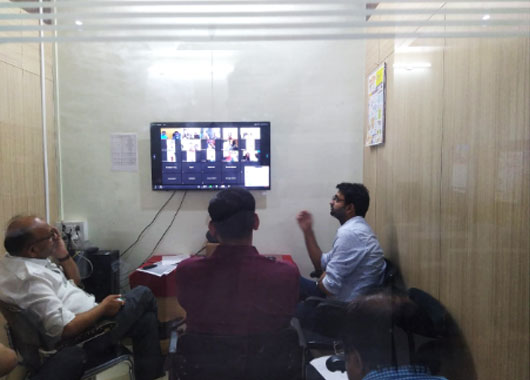Field Story By Amit Tandon
This assignment with RedR India started soon after my previous deployment to Kerala on the Flood Recovery Project. I arrived in the District of Sangli, Maharashtra in September 2019, as a District Disaster Recovery Coordination Consultant, Unicef-GoM, after the massive floods in the Krishna river. Back then I had little knowledge about how my three-month short stint will evolve and I will be part of Covid-19 response. My Journey started with a task to prepare Social Sector Recovery and Preparedness Plan (SSRPP), for the district and during my nine-month-long journey, I got the opportunity to work closely with the administration of Zilla Parishad Sangli, understanding the different processes, systems, concerns and challenges. My work started with flood recovery and has been continuing into the COVID-19 response. In both cases, one of the key components of my work is closely associated with Information Management in humanitarian crises.
By its definition, Information Management is a process by which relevant information is provided to the decision-makers on time. The process involves, collecting data, analysing information, and enabling decisions. This process can be divided into three vertices i.e. planning, operations, and decision making.
As flood recovery coordination specialist, I was responsible for Social Sector Recovery Plans and coordination between various NGO’s and Government Line departments. The process involved collecting damage information of 104 villages across 5 sectors (education, health, child protection, nutrition, and WASH) to arrive at a detailed Damage, Loss and Needs Assessment. This information helped in channelising recovery measures and to develop a long term approach for recovery and preparedness planning.
Since March 2020, I have been engaged with COVID-19 response at the Corona – Control Room at Zilla Parishad, Sangli with responsibilities of managing information sets such as field reporting through Community Health Officers, Registration of Cases at isolation centres, crowdsourced information of self-registration of people with domestic travel history, crowdsourced information on private health facilities and self-reporting of essential service providers for any COVID like symptoms.

At Angnwadi Centre in Bhilawdi, September 2019

RedR Deployee Amit Tandon working at Corrona Control Room, April 2020
Learning and Reflections Choosing the correct tool is one of the most critical aspects of information management. Often these applications and dashboards are being perceived as a ‘solution’ however it often adds more complications and raises concerns among people. In this case, we had access to using Kobo toolbox, Open Data Kits, and Google forms which could be deployed in the field. Currently, we are using Google Forms Coupled with Google sheets to collect diverse sets of information. This was primarily because of a much user-friendly interface, adequate customisation of the tool, integrating with google sheets, real-time data analysis, etc. In a humanitarian crisis, the scenario is highly dynamic and we need tools, methods, and intent that are flexible enough to adapt to these highly-dynamic situations.
Trusting the people who are providing the information is very critical in this process. We have been using digital tools to collect information for different purposes ranging from self-registration of individuals for domestic travel history, daily reporting of the frontline workers, crowdsourcing information, reports of any suspect, etc. In all these diverse information sets one underlying attribute is ‘trust’. The underlying assumption is that in a humanitarian crisis people are providing the most accurate information as per their knowledge in the best interest of themselves and the society at large.
Working in the humanitarian situation is about managing polarities and that is reflected in information management as well. Where there is a continuous balance between planning, action and decision making, which has an impact on the quality of information and data we have. The data collected needs to be seen with field-level understanding during the analysis. There will be always certain inadequacies in the data which is collected, however, the focus needs to be on what we have and not on the don’t. This mindset helps in taking quick and informed decisions.
Enabling actions is the main objective of the information process, data, and tools in isolation won’t enable actions. And hence we need protocols, processes, and planned actions in order, which defines how the information collected is processed and put to certain actions. In my experience, I have noticed that a lot of human resources are invested in filing information or making reports in the form of dumping all the data. However, there is little analysis that is done on the information. Streamlining information flow reduces the time-lag in the compilation of information which is substituted by investing time in analysis and decision making. This is a very important transition in the governance where the machinery is enabled to make an informed decision.
To conclude, Information management gives an overall perspective of the complete process that helps in understanding the gaps. It also provides detailed insights into each vertical that enables a process to take concrete measures. It is a continuous process that requires reflection and in return, it gives a large scope of improvisation.

Participating in Video Conference at ZP Sangli with CEO, ZP Sangli and District Health Officer, Sangli. March 2020

